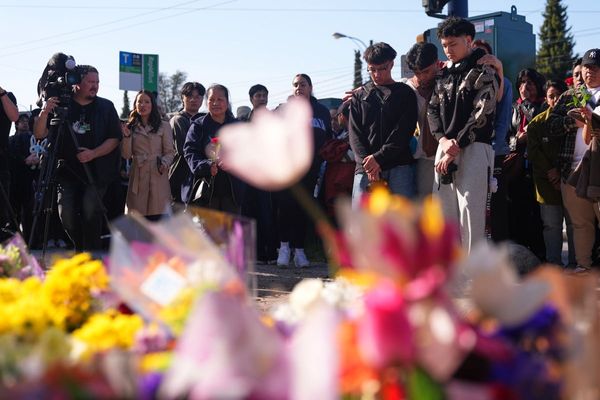
Israel launched an attack on Iranian soil on Friday, in a tit-for-tat battle between the two foes, days after Iran launched an unprecedented strike on Israel with a barrage of drones and missiles, most of which were shot down. The Iranian strike was a response to an Israeli airstrike on the Iranian embassy compound in Damascus on 1 April.
The strikes have brought a long shadow war between the two sides into the open and also come against the backdrop of Iran’s support for the Palestinian militant group Hamas, whose assault on Israel on 7 October triggered the invasion of Gaza.
What do we know about what happened?
Iranian state media says air defences brought down three small drones over the central city of Isfahan, which holds facilities for the country’s nuclear programme, in the early hours of Friday morning. Air defence systems were also activated over several other cities, including Tabriz in the north.
Israel has a long-held policy of not commenting on operations against Iran but US officials were quick to brief that Israel was behind the attack. US officials have also briefed that an Israeli missile hit a target in Isfahan.
The International Atomic Energy Agency confirmed there was no damage to Iran’s nuclear sites in Isfahan province. Residents from the area sent footage to BBC Persian in which an explosion could be heard and flashes seen in the night sky.
How have both sides reacted?
Iranian state media and officials have referred to the incident as an attack by “infiltrators”, rather than by Israel, obviating the need for retaliation. Iranian state media showed footage of air defence systems in Isfahan on Friday in a broadcast that emphasised a lack of damage from the attack.
Israeli officials have declined to comment publicly but several quoted off the record said Israel was responsible.
Reuters quoted a source familiar with western intelligence assessments as agreeing with the Iranian claim that the drones had taken off inside Iranian territory, suggesting either special forces or an Iranian faction allied to Israel was involved.
The limited Israeli action and muted nature of Iran’s response may suggest an attempt by both sides at de-escalation.
What happens at Isfahan?
Isfahan is significant for its military-industrial facilities, sites associated with Iran’s nuclear programme and a large airbase hosting the the country’s ageing fleet of F-14 Tomcats.
Among the nuclear facilities in Isfahan is the underground Natanz enrichment site, which has been repeatedly targeted by suspected Israeli sabotage attacks.
This file photo from 2005 shows an exterior view of the Natanz facility.
This satellite image from Planet Labs shows the dual-use civilian airport and airbase in Isfahan on Thursday.
Where else is the Israel-Iran shadow war playing out?
The Israeli military has carried out hundreds of strikes in Syria since the outbreak of the civil war there in 2011, targeting the army and Iran-backed fighters. The strikes have increased since the war in Gaza. On Friday Israel targeted an army position in the south.
In Iraq, Iran-backed Shia militias have intensified their attacks on US bases since 7 October, and have also been launching drones towards Israel. Israeli aircraft have in turn launched strikes on targets in the country.
Israel has also been exchanging fire for months with Hezbollah, the Lebanese Shia Islamist political party and militant group backed by Iran. This map shows attacks by both sides over the border since 7 October.
Shadow hostilities have also been playing out in waters off Yemen, where the Iran-backed Houthi group has fired missiles towards vessels it says are linked to Israel, in solidarity with the Palestinians in Gaza. In response, the US and UK have struck Houthi positions in Yemen.
What might happen next?
An Iranian official indicated that it had no “immediate” plan for retaliation, and calls mounted internationally for Israel and Iran to de-escalate their confrontation.
However, the rules of confrontation that have long existed between Iran and Israel – a conflict traditionally fought indirectly – have increasingly been torn up in the six months since the Gaza war began, and some observers fear the latest activity is merely another signal that the widening conflict has become more dynamic.
What’s happening in Gaza?
The metastasising nature of the conflict in the Middle East has at times drawn attention away from Gaza, where almost 34,000 Palestinians have been killed. Aid agencies have warned that many more will soon die without an immediate ceasefire and massive increase in aid.
This week Israeli media reported that the military had deployed extra artillery and armoured personnel carriers to the Gaza Strip periphery, suggesting the military is preparing for its long-threatened ground offensive on Rafah, the only place of relative safety for at least 1.4 million displaced Palestinian civilians.







